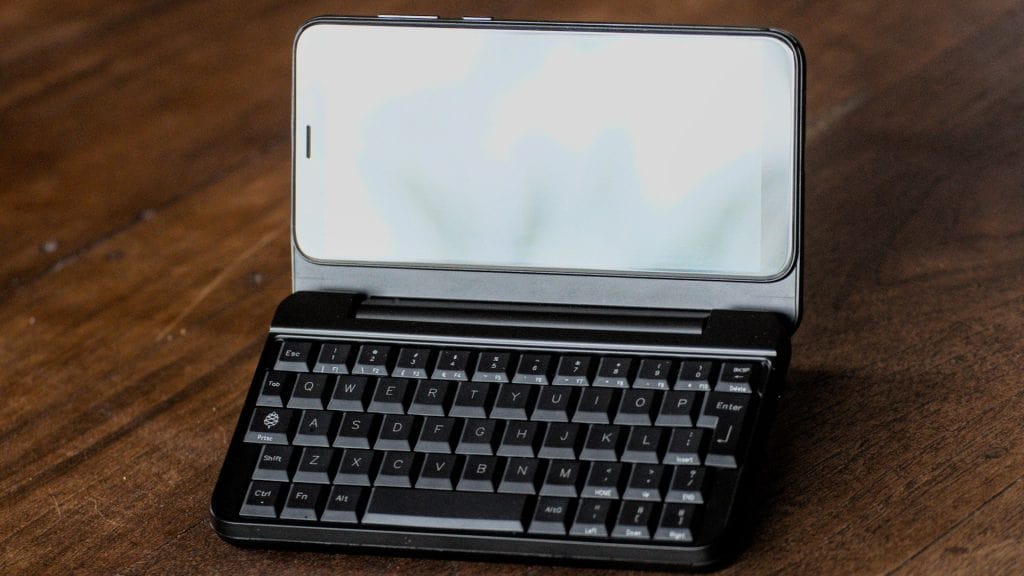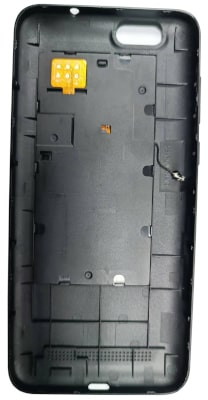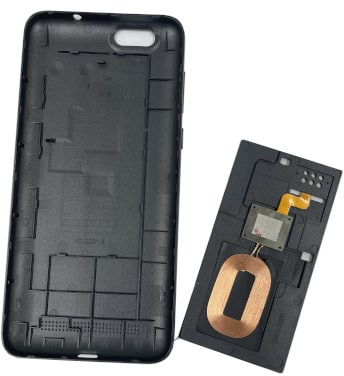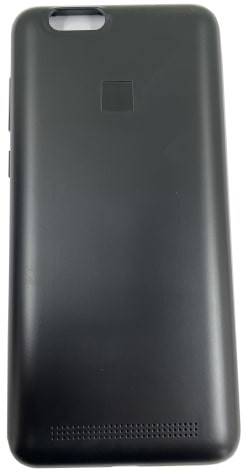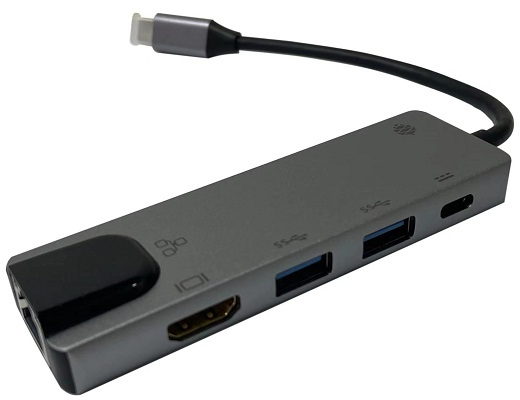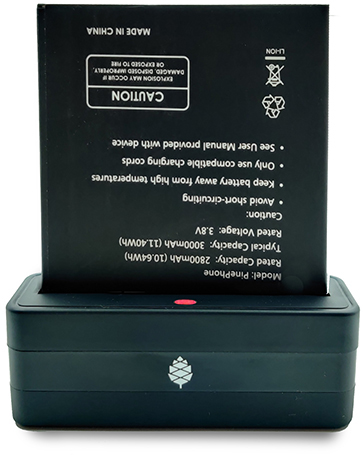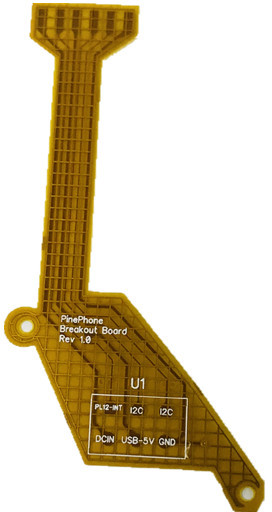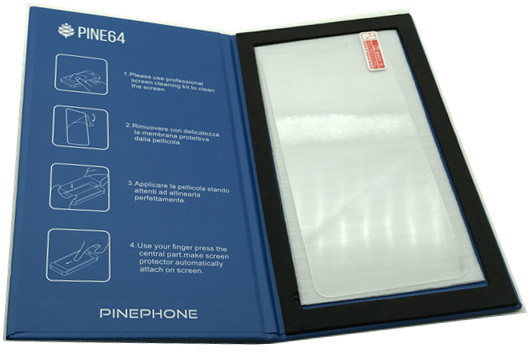PinePhone Pro
BY PINE64
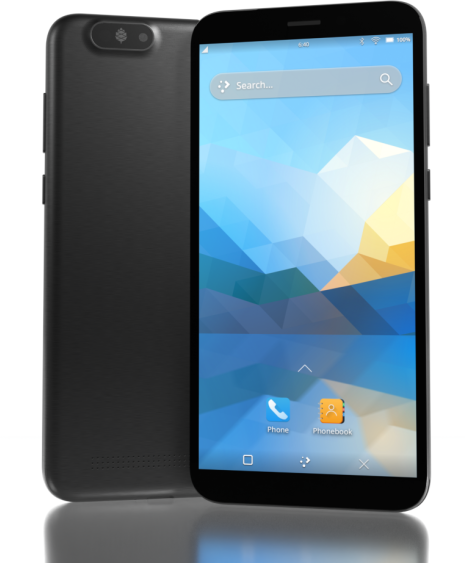
Meet the PinePhone Pro, our flagship smartphone and the best way to experience mainline Linux on a mobile device.
Features and Specifications
| System on Chip (SoC) | Rockchip RK3399S 64bit SoC – 2x A72 and 4x A53 CPU cores @ 1.5GHz |
| GPU | ARM Mali T860 4x core GPU @ 500MHz |
| RAM | 4GB LPDDR4 @ 800MHz |
| Storage | 128GB eMMC flash storage Optional micro SD card (SDXC up-to 2TB) |
| LCD panel | 6″ 1440 x 720 in-cell IPS with Gorilla Glass 4™ |
| Cameras | 13MP Sony IMX258 main camera with Gorilla Glass 4™ protective layer 8MP OmniVision OV8858 front-facing camera |
| Modem & GPS | Quectel EG25-G – global GSM and CDMA bands GPS, GPS-A, GLONASS |
| WiFi & Bluetooth | AMPAK AP6255 WiFi 11ac + Bluetooth V4.1 |
| I/O | MicroSD slot Pogo-pins (compatible with the original PinePhone) USB-C power, data (USB 3.0) and DP alt-mode video out |
| Sensors | Accelerator Gyroscope Proximity Compass Ambient light |
| Privacy hardware switches | Cameras Microphone WiFi and Bluetooth LTE modem (including GPS) Headphones (to enable UART output) |
| External buttons | Volume up / down rocker Power ON/ OFF |
| Audio Out | Headset speaker Audio jack Loud Speaker |
| Other | Flash / Torch Vibration motor Status LED UART via audio jack |
| Battery | Samsung J7 form-factor 3000mAh |
| Charging | 5V 3A (15W) Quick Charge – USB Power Delivery specification |
| Dimensions | 160.8 x 76.6 x 11.1mm |
| Weight | Approx. 215g |
Stores
| Global |
| Global: Accessories |
| Global: Spare parts |
| EU |
| EU: Accessories |
| Affiliates |
Documentation
| PinePhone Pro |
| Datasheets, schematics and certifications |
What’s inside?
We learned a lot from working on the original PinePhone. Over the past two years we painstakingly collected and analyzed your feedback and explored all avenues for hardware improvements. The PinePhone Pro is the end result of this journey. It is powered by a Rockchip hexa-core SoC operating at 1.5GHz, and ships paired with 4GB of dual-channel LPDDR4 RAM as well as 128GB of internal eMMC flash storage. It features a high-fidelity 13MP main camera sensor and a 5MP front-facing camera.
We worked closely with Rockchip’s engineering team to fine-tune the SoC’s performance so that it meets the necessary thermal and battery-consumption envelopes. The result of this cooperation is the RK3399S – a RK3399 variant made specifically for the PinePhone Pro. Rockchip’s team was also instrumental in enabling the PinePhone Pro’s suspend state, which allows the smartphone to receive calls and SMS messages while preserving battery.
Hardware privacy dip switches for the cameras, the microphone, WiFi & BT, headphone jack (enabling UART) and the LTE modem (including GPS) are accessible under the back cover, just as on the original PinePhone.
What’s the outside like?
We wanted the PinePhone Pro to reflect its status as a pro-grade device while maintaining perfect compatibility with all existing PinePhone peripherals. The PinePhone Pro uses the same pogo-pin systems and back cover attachment as the original PinePhone, making it compatible with all existing add-ons. The keyboard, PineDio LoRa, fingerprint reader and wireless charging cases will all work with the PinePhone Pro.
The PinePhone Pro features a vibrant in-cell IPS display covered with Corning Gorilla Glass 4™ with an oleophobic coating, offering superior scratch resistance and image clarity. The camera is covered by Corning Gorilla Glass 4™ and protected by an elevated bezel, similar to the one found on the original PinePhone.
The chassis is slightly thicker (~2mm) than the original PinePhone’s. Proportions of the original design were altered to accommodate the new display and to allow for improved heat dissipation. The coating on the back of the PinePhone Pro has been given a premium feel and engineered to minimize oily fingerprints. We think you’ll be pleased with the end-result.
Who is it for?
Contemporary mobile Linux operating systems have a way to go before they can be considered true alternatives to Android or iOS. While mobile Linux isn’t in a state that could satisfy most mainstream electronics consumers, we recognize that a sizable portion of our community is ready to make the jump to a Linux-only smartphone today. The PinePhone Pro has the raw horsepower to be your daily driver, granted you’re ready to accept the current software limitations.
In a nutshell: if you are an existing PinePhone owner and your only wish is for the device to be more powerful and refined, then the PinePhone Pro is for you
Who isn’t it for?
We’re not in the business of selling empty promises – a much faster mainline Linux smartphone won’t make the existing operating systems more refined, nor will it magically spawn software replacements for your iOS or Android applications. There is a long road ahead of us, all of us, and it will require time and effort for the software to reach a degree of maturity that would satisfy mainstream users.
If you depend on proprietary mainstream mobile messenger applications, banking applications, use loyalty or travel apps, consume DRM media, or play mobile video games on your fruit or Android smartphone, then the PinePhone Pro is likely not for you.
What does it run?
Openness means privacy and security as well as software choice. Just as the original PinePhone, the PinePhone Pro runs mainline Linux (with patches, which are being upstreamed) with open source drivers.
Where do I learn more?
More information about the PinePhone Pro will be available in the days and weeks to come. We encourage you to read the October Community Update featuring an explanation of the rationale behind bringing the PinePhone Pro to the market and an account of our team’s decision-making process.
Accessories
FAQ
I am a PinePhone owner – will I be able to upgrade it by installing a PinePhone Pro mainboard?
Probably not. While the PinePhone Pro’s mainboard will fit the PinePhone, the chassis, IPS display panel, cameras, the daughterboard, and thermal dissipation systems are all different. For instance, the PinePhone Pro’s cameras will not fit into the PinePhone chassis and are electrically incompatible with the PinePhone’s mainboard. Software enablement would also be required to drive the original PinePhone’s components (such as the LCD) using the PinePhone Pro’s mainboard. Thermal dissipation is another important consideration, as the higher heat output may not be trivial to overcome in the original PinePhone’s chassis.
Will you keep on producing and selling the original PinePhone?
Absolutely! There are many people who either need a less expensive option or simply aren’t ready to make the commitment to switch to a Linux smartphone just yet. The PinePhone will keep on catering to this crowd for the foreseeable future.
Moreover, we believe that the PinePhone will retain its position as the most popular mobile Linux development platform on the market due to its price point and broad adoption. We know that the development community depends on the PinePhone’s continued availability, so we will produce it for as long as there is demand and available components.
Can I use the PinePhone keyboard and other add-on back cases with the PinePhone Pro?
Yes, we designed the midframe and pogo pin layout of the PinePhone Pro to be compatible with the original PinePhone. You can expect all PinePhone accessories, bar the original PinePhone’s soft and hard protective covers, to work with the PinePhone Pro. Future accessories will strive to be compatible with both smartphones.
How does the PinePhone Pro compare to the Pinebook Pro performance-wise?
Although both devices use a similar SoC, due to the thermal constraints imposed by the chassis, the PinePhone Pro is around 20% slower than a Pinebook Pro. The RK3399S chips used in the PinePhone Pro are binned and voltage locked for optimal performance with sustainable power and thermal limits. That said, the perceived performance of the two devices ought to be comparable due to the PinePhone Pro’s lower screen resolution and better optimization.
Does the PinePhone Pro have fewer blobs and more open firmware than the original?
The PinePhone Pro is as open as the original PinePhone. Read more here.
Will PinePhone Pro’s production be affected by global component shortages?
It is highly likely that production will be affected by global component shortages at some stage, but it is very difficult for us to determine the degree, given how hard it is to foresee how the situation will unfold in the coming months. Our website features an inventory availability, stock and shipping status page updated on a regular basis.
How repairable is the PinePhone Pro?
Just as the original PinePhone, the PinePhone Pro is built to be user repairable and we will offer spare parts in the Pine Store. The store’s selection will include all parts that frequently break if the device is dropped (the screen, back case and mid section) as well as all electronic components, including the mainboard.
The PinePhone Pro is held together by standard Phillips screws – all you need to repair it is a suitable screwdriver and some spare time.

